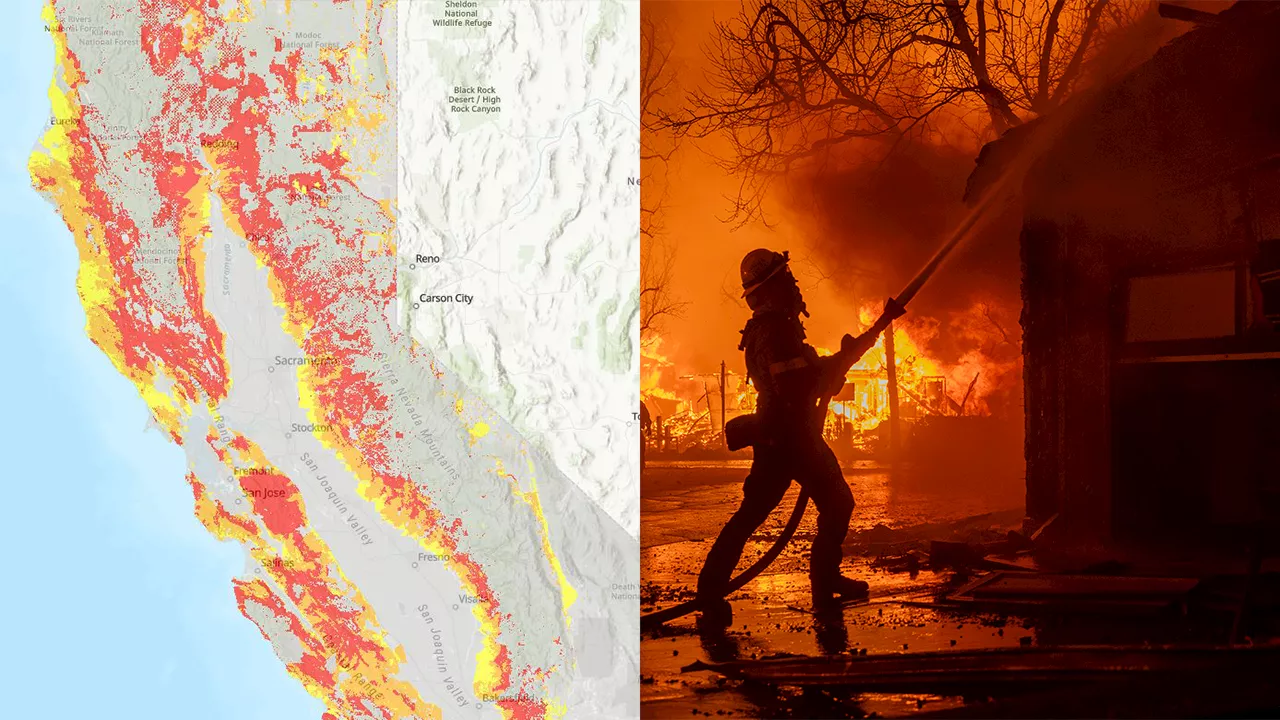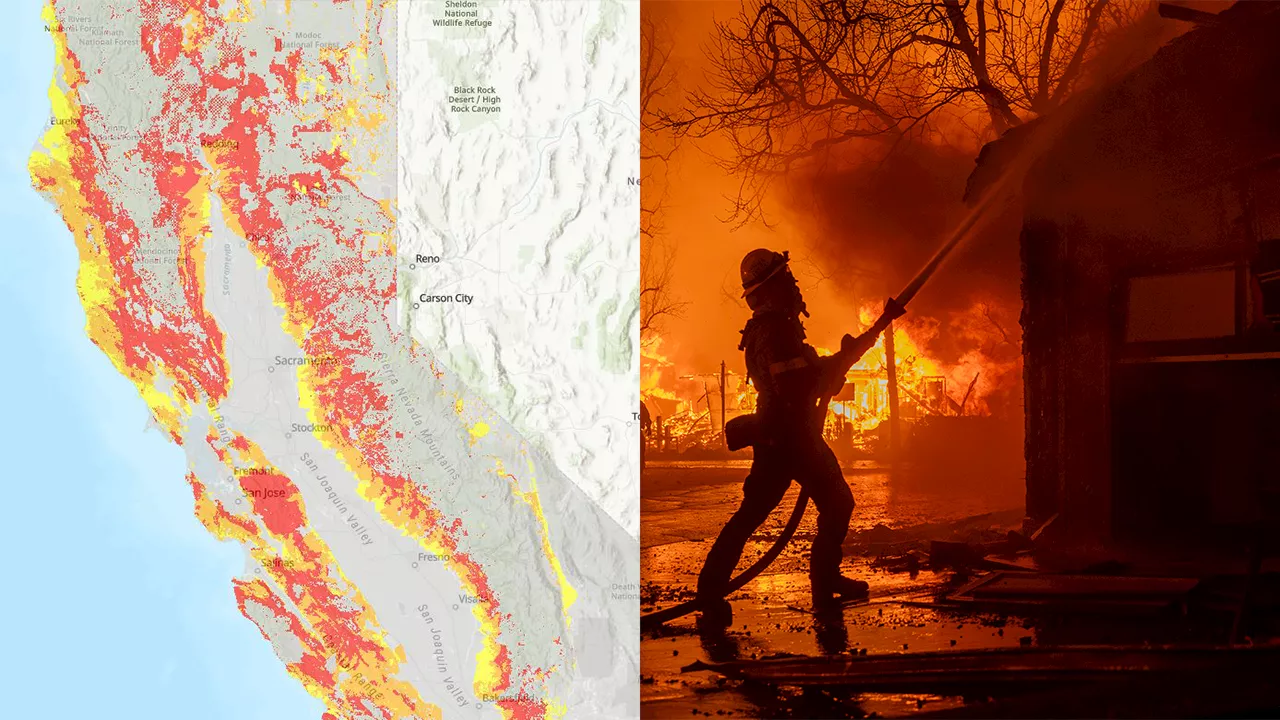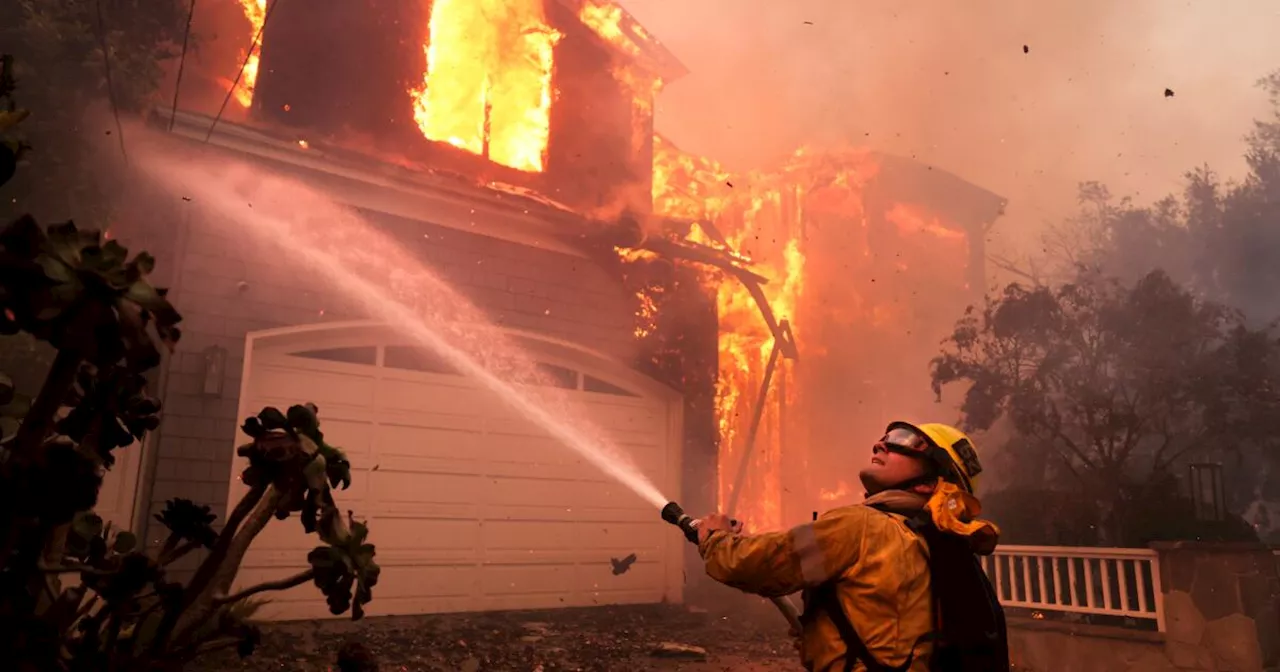Two letters to the editor discuss the challenges of building in fire-prone areas and the effectiveness of different building materials.
To the editor: While there is a need to upgrade the building codes to more fire-resistant practices, the kind of tilt-up concrete buildings suggested by one letter writer is not necessarily the answer. Those buildings are more rigid and might suffer more from earthquakes. After the Northridge earthquake in 1994, the Seismic Addendum was added to the American Welding Society's Structural Welding Code to address the rigidity of steel-frame buildings that fractured in the quake.
Wood-frame buildings can move to a degree for survivability. There are practices available to reduce the chances of embers entering structures and causing ignition. Those would be advised as a way to reduce a fire's severity. Alan Johnson, Seal Beach The writer is a retired certified welding inspector and a former member of the American Welding Society's committee on structural welding. \To the editor: It's not a matter of 'if,' but rather of 'when' — and it's entirely predictable. If you live in a fire-prone area, you can take all the fire precautions available — brush clearance 100 feet from a structure, irrigation and planting fire-retarding plants, for example. But 'when' is still possible at any time. Why an insurance company would ever sell policies for these areas is confusing. Why the city or county of Los Angeles or any other similar areas allow homes to be built in these areas is outrageous. Wood burns and steel melts, and if you're lucky enough to have a concrete home with a tile roof, even that type of structure will last only so long in an inferno. Dave Simon, North Hollywood The writer is a landscape architect
BUILDING CODES FIRE SAFETY EARTHQUAKES STRUCTURAL ENGINEERING LANDSCAPE ARCHITECTURE
United States Latest News, United States Headlines
Similar News:You can also read news stories similar to this one that we have collected from other news sources.
 Cal Fire's Fire Hazard Severity Zone Map Shows California Fire RiskCal Fire's new Fire Hazard Severity Zone map allows Californians to search for an address and see the location's probability of being affected by fire. The map assesses fire hazard, rather than risk, based on the physical conditions that create a likelihood of fire behavior over a 30 to 50-year period. The map considers terrain, local weather, and fire history over 50 years. Areas are ranked as moderate, high, or very high fire severity. The map is effective as of April 1, 2024 and focuses on areas under state responsibility, excluding federal land like the Sierra Nevada Mountains and some parts of the Bay Area.
Cal Fire's Fire Hazard Severity Zone Map Shows California Fire RiskCal Fire's new Fire Hazard Severity Zone map allows Californians to search for an address and see the location's probability of being affected by fire. The map assesses fire hazard, rather than risk, based on the physical conditions that create a likelihood of fire behavior over a 30 to 50-year period. The map considers terrain, local weather, and fire history over 50 years. Areas are ranked as moderate, high, or very high fire severity. The map is effective as of April 1, 2024 and focuses on areas under state responsibility, excluding federal land like the Sierra Nevada Mountains and some parts of the Bay Area.
Read more »
 Cal Fire's Fire Hazard Severity Zone Map Helps Californians Assess Fire RiskCal Fire's new Fire Hazard Severity Zone map allows residents to search for an address and see the location's probability of being affected by fire. This map focuses on fire hazard, not risk, and considers factors like terrain, weather, and fire history.
Cal Fire's Fire Hazard Severity Zone Map Helps Californians Assess Fire RiskCal Fire's new Fire Hazard Severity Zone map allows residents to search for an address and see the location's probability of being affected by fire. This map focuses on fire hazard, not risk, and considers factors like terrain, weather, and fire history.
Read more »
 Oregon Implements New Wildfire Hazard Maps and Building CodesOregon adopts new wildfire hazard maps and building codes, requiring homeowners in high-risk areas to meet stricter standards. This decision follows devastating wildfires in recent years and aims to mitigate future risks.
Oregon Implements New Wildfire Hazard Maps and Building CodesOregon adopts new wildfire hazard maps and building codes, requiring homeowners in high-risk areas to meet stricter standards. This decision follows devastating wildfires in recent years and aims to mitigate future risks.
Read more »
 Paxtang Borough, Fire Company Dispute Continues in CourtThe ongoing legal battle between the Paxtang Borough and Paxtang Fire Company No. 1 centers around the fire company's use of the borough's municipal building. The borough is seeking thousands of dollars in rent and utility payments, claiming the fire company never agreed to such charges. The fire company argues that they never signed an agreement requiring payment and maintains their use of the building is justified. The dispute also involves past charges against former fire company members, including theft and forgery, which the fire company successfully argued should not be admissible in the current case.
Paxtang Borough, Fire Company Dispute Continues in CourtThe ongoing legal battle between the Paxtang Borough and Paxtang Fire Company No. 1 centers around the fire company's use of the borough's municipal building. The borough is seeking thousands of dollars in rent and utility payments, claiming the fire company never agreed to such charges. The fire company argues that they never signed an agreement requiring payment and maintains their use of the building is justified. The dispute also involves past charges against former fire company members, including theft and forgery, which the fire company successfully argued should not be admissible in the current case.
Read more »
 New California insurance rule will increase coverage in fire-prone areasUnder a new insurance regulation that just got approved this week, California Insurance Commissioner Ricardo Lara said homeowners should have an easier time buying fire insurance, even in fire-prone areas.
New California insurance rule will increase coverage in fire-prone areasUnder a new insurance regulation that just got approved this week, California Insurance Commissioner Ricardo Lara said homeowners should have an easier time buying fire insurance, even in fire-prone areas.
Read more »
 California Mandates Home Insurance Coverage in Fire-Prone AreasCalifornia implements a new regulation requiring home insurance companies to offer coverage in high-risk fire areas.
California Mandates Home Insurance Coverage in Fire-Prone AreasCalifornia implements a new regulation requiring home insurance companies to offer coverage in high-risk fire areas.
Read more »
